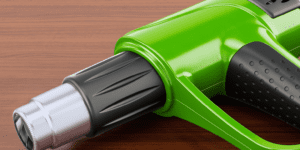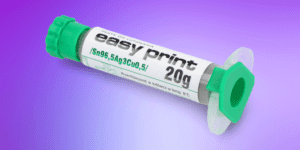Spis treści:
Fire protection should be one of the most carefully looked after aspects in construction. Apart from fire fighting systems (hydrants, fire extinguishers or fire sprinkler systems), the detection of the first signs of fire is also very important.
However, it is worth knowing that currently there are many types of smoke, flame or gas detectors available on the market, and it is rare that any of them can be replaced by any other detector – the selection of a suitable model should be preceded by a careful analysis of the threat in a given building, as this is the only way to ensure real protection while minimising the risk of causing false alarms.
How does the smoke detector work?
Smoke detectors – as opposed to flame detectors – are designed to detect even small amounts of smoke, which makes it possible to detect a threat much earlier than fire detectors, whose reaction appears only at a relatively advanced stage of a fire. However, the detection method used in the device determines the amount of smoke detectable.
Isotopic sensors are based on the ionisation of air in a built-in chamber exposed to ionising radiation. This radiation is generated by a source in the form of a small container with a radioactive element, placed inside the sensor housing. Ionisation of the air causes a small current to flow, whose weakening (caused by air contamination with smoke particles) is the cause of the alarm.
The photoelectric smoke detector, on the other hand, works on the basis of the phenomenon of infrared beam scattering, emitted by the LED (IR) diode built into the detector. The light, reflected in random directions from the smoke particles, also reaches the photodetector behind the optical partition in part, and when the set threshold is reached, the comparator circuit activates the alarm output.

Combination detectors have also been developed, combining e.g. photoelectric method with temperature sensor, which allows to distinguish real fire from potential disturbing situations (e.g. appearance of cigarette smoke in the room).
Considerations for installing the smoke detector
One of the basic conditions for proper and reliable operation of a smoke detector turns out to be its proper placement in the premises. The question of where to mount the smoke detector is conditioned among other things by the dimensions of the room, and more specifically its height – in the case of very high rooms (10 m and more) mounting on the ceiling is usually not recommended, and the solution to the problem are so-called aspirating detectors.

In most cases, however, when dealing with lower rooms, smoke detectors should be mounted on the ceiling or (possibly) on the wall, avoiding so-called “dead zones”. These areas are the result of physical phenomena that cause smoke to ‘bypass’ them – examples include the edges of walls and ceilings, or the space at the top of triangular or sloping ceilings. Smoke detectors should also not be installed in the area of ventilation grilles, as increased air movement can interfere with the detectors.
It is worth remembering that the optimal place to install detectors is in the middle of the ceiling. It is also worth planning to provide easy access to the detector in order to periodically change batteries.
Most frequent problems
Many detector users wonder why a smoke detector beeps despite the absence of a source of any smoke in the room in which it is installed. As usual, there may be several answers to this question. Some detectors signal with an infrequent beep (repeated every minute, for example) that the battery, which is running low on power, needs to be replaced. Another common scenario is the generation of a beep for a few seconds just after a battery change – it is worth knowing that in some detectors this may be perfectly normal behaviour.
It should also be mentioned that some models of devices may generate false alarms – for example, an optical detector installed in a kitchen will “sound” even after detecting a small amount of smoke (e.g. from burnt food), so it is worth considering the installation of a hybrid detector. In any case, read the detector’s user manual to learn about its warning signals, the manufacturer’s recommended installation and operation.
How useful was this post?
Click on a star to rate it!
Average rating 0 / 5. Vote count: 0
No votes so far! Be the first to rate this post.








